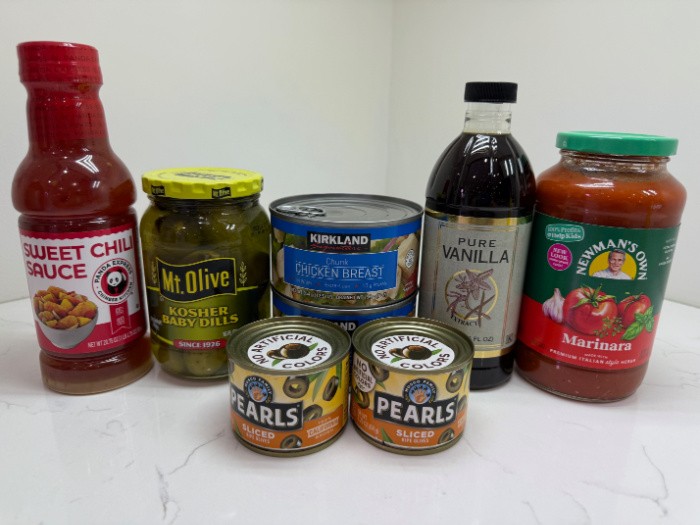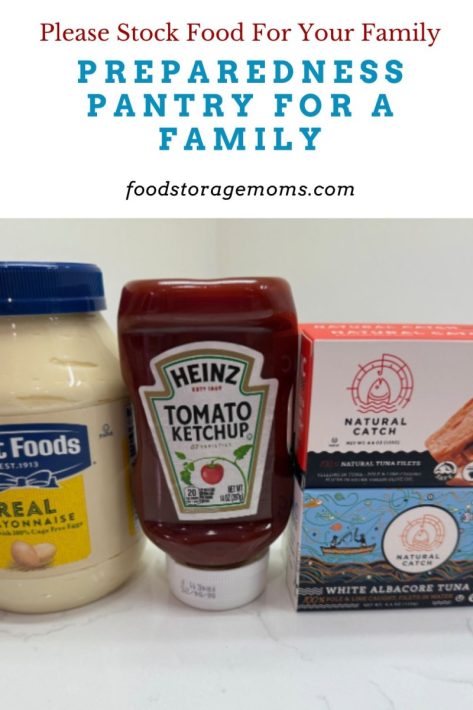
A preparedness pantry for a family is more than just shelves of food; it’s a foundation of security and comfort. Whether you’re preparing for power outages, natural disasters, or financial uncertainty, having a well-stocked pantry ensures your loved ones are safe, nourished, and ready for anything. Building your pantry doesn’t have to be overwhelming; with the right foods, supplies, and organization, you can create a system that genuinely supports your family’s needs.
Start with Shelf-Stable Pantry Staples
The heart of a family preparedness pantry is shelf-stable food that lasts for months or years. Stock up on essential items such as rice, pasta, oats, instant potatoes, flour, and cornmeal. These versatile foods form the base of countless meals and are easy to store.
Add a variety of canned goods to your shelves, including vegetables, fruits, soups, sauces, beans, and protein options like tuna, chicken, or chili. Don’t forget the baking essentials, such as sugar, salt, yeast, baking powder, cocoa, and powdered milk, so that you can make bread and other comfort foods from scratch even during an emergency.

Include Long-Lasting Protein Sources
Protein is vital for energy and nutrition. Stock up on canned meats like tuna, chicken, ham, salmon, or Spam. Dried beans, lentils, and peanut butter are inexpensive, filling, and long-lasting and also provide protein. For deeper food storage preparation, add freeze-dried meats, powdered eggs, or textured vegetable protein (TVP). These lightweight options store well and give you flexibility when cooking from your emergency pantry.
Add Flavor with Spices and Condiments
To keep meals interesting and prevent food fatigue, include a variety of spices, herbs, and condiments. Basic seasonings like salt, pepper, garlic powder, onion powder, chili powder, and Italian seasoning add flavor to any dish. Store vinegar, soy sauce, bouillon cubes, and honey to enhance soups, meats, and casseroles. A flavorful pantry keeps morale high when times are tough.
Don’t Forget Comfort Foods
During stressful situations, a little comfort goes a long way. Add treats and snacks that bring joy and familiarity, such as chocolate, cookies, crackers, instant pudding, and cocoa mix. These simple pleasures can help maintain a sense of normalcy for both kids and adults when life feels uncertain.
Plan for Water and Beverages
Water is your most essential emergency supply. Store at least one gallon of water per person per day, aiming for at least two weeks’ worth. Include shelf-stable drinks like juice boxes, powdered milk, and electrolyte packets. Having a variety of drink options ensures hydration and comfort when fresh water or milk isn’t available. I recommend four gallons per person per day to ensure you stay hydrated, you have water for cooking, and to provide water for personal hygiene and limited laundry chores.
Stock Non-Food Emergency Supplies
A true preparedness pantry goes beyond food. Include non-food items that make daily life easier during an emergency, such as paper towels, toilet paper, trash bags, disposable plates and utensils, soap, wipes, and hand sanitizer. Also, consider including flashlights, matches, candles, and batteries in an accessible spot. And never forget a manual can opener, a small but vital tool for opening canned foods when power is out.
Organize and Rotate Your Food Storage
Proper organization keeps your food fresh and prevents waste. Use the FIFO method—First In, First Out—so older items get used before newer ones. Store your pantry goods in a cool, dark, and dry location away from heat and sunlight. Label containers, use airtight bins for grains and flours, and keep a running inventory list to track what you have and what needs replacing.
Use Freezer and Fridge Add-Ons When Possible
If you have access to power or backup energy, consider expanding your preparedness plan to include short-term frozen items. Frozen meats, vegetables, butter, cheese, and bread add variety to your meals. These foods work well for short-term emergencies or temporary disruptions.
Customize Your Pantry for Your Family’s Needs
Every family is different, and your preparedness pantry should reflect that. Choose foods your family enjoys, include kid-friendly snacks, and plan around any dietary restrictions. Don’t forget to include pet food and supplies if you have animals. Building your pantry gradually, one shopping trip at a time, makes it affordable and sustainable.
Preparedness Pantry for a Family
1. Shelf-Stable Essentials
These are your everyday meal builders that last for months or years.
- Grains & Starches: white rice, pasta, instant potatoes, oats, flour, cornmeal, pancake mix
- Canned Goods: beans, tomatoes, vegetables, fruit, tuna, chicken
- Baking Supplies: salt, sugar, baking powder, baking soda, yeast, cocoa, powdered milk
2. Proteins for Long-Term Energy
Protein keeps everyone strong during stressful times.
- Canned meats: tuna, chicken, ham, salmon, Spam
- Dried beans, lentils, split peas
- Peanut butter or other nut butters
- Freeze-dried meats and TVP (textured vegetable protein)
- Powdered eggs or shelf-stable egg substitute
3. Seasonings & Flavor Boosters
Food fatigue is real. These make meals taste better.
- Salt, pepper, garlic powder, onion powder, chili powder
- Italian seasoning, cumin, cinnamon, paprika
- Bouillon cubes or broth base
- Soy sauce, hot sauce, vinegar, and honey
- Instant coffee, tea, or cocoa mix
4. Comfort & Morale Foods
A little comfort goes a long way in hard times.
- Chocolate, candy, or cocoa mix
- Instant pudding or gelatin
- Crackers, cookies, or granola bars
- Coffee, tea, or drink mixes (like Tang or lemonade powder)
- Condiments: ketchup, mustard, mayo packets, and relishes
5. Beverages
Hydration is key in emergencies.
- Bottled water (minimum 1 gallon per person per day; aim for 3 days to 2 weeks). I prefer four gallons per person daily. I get thirty thinking about only one gallon.
- Shelf-stable juice boxes
- Powdered milk or shelf-stable milk cartons
- Drink powders or electrolyte packets
6. Non-Food Pantry Supplies
These keep your family healthy, clean, and safe.
- Paper towels, toilet paper, trash bags
- Disposable plates, cups, and utensils
- Hand sanitizer, soap, wipes
- Flashlights, batteries, candles, matches
- Manual can opener
7. Organization & Rotation
Keep your food fresh and manageable.
- Use FIFO (First In, First Out); the oldest items get used first.
- Keep a pantry inventory list taped to the inside of the door.
- Store in cool, dark, dry areas (avoid garages or attics).
- Use airtight containers for flour, sugar, and grains.
8. Freezer & Fridge Add-Ons (for short-term emergencies)
If the power stays on or you have backup power, include:
- Frozen meats and vegetables
- Butter and cheese (or freeze-dried alternatives)
- Bread and tortillas
9. How Much to Store
- Short-term (3 days – 2 weeks): Quick meals and water for daily needs.
- Mid-term (1–3 months): Stock up on bulk pantry staples and canned goods.
- Long-term (6 months – 1 year+): Freeze-dried foods, grains, beans, sugar, salt, powdered milk.
10. Family-Focused Tips
- Choose foods everyone likes; crisis time isn’t for picky eating battles.
- Include familiar comfort foods for kids.
- Practice cooking from your pantry regularly so it’s part of your routine. This helps keep the food rotation system going.
- Don’t forget pets, stock extra food and supplies for them, too.
Final Word
Creating a preparedness pantry for your family isn’t about fear; it’s about peace of mind. A well-stocked pantry provides comfort, control, and security during uncertain times. Start small by adding a few extra shelf-stable items to your weekly shopping list, rotating your stock regularly, and storing what your family truly eats.
Preparedness is about being ready, resourceful, and resilient. With a thoughtfully planned pantry, you’ll know that no matter what happens, your family will always have enough. May God bless this world, Linda
The post Preparedness Pantry for a Family appeared first on Food Storage Moms.
from Food Storage Moms
No comments:
Post a Comment